
Mallorca: The Jewel of the Mediterranean
Discover Mallorca's stunning beaches, historic landmarks, and vibrant culture – a perfect Mediterranean escape with adventures for every traveler.
Mallorca, the largest of Spain's Balearic Islands, is a paradise for tourists. With its stunning beaches, charming villages, and vibrant nightlife, there's something for everyone. The island's capital, Palma, boasts a rich history, evident in landmarks like the stunning Palma Cathedral and the Royal Palace of La Almudaina. Wander through its narrow streets and discover hidden gems in the form of quaint cafes and unique boutiques. For nature lovers, the Serra de Tramuntana mountain range offers breathtaking hikes and panoramic views. The island's coastline is dotted with beautiful coves and crystal-clear waters perfect for swimming, snorkeling, and sailing. Don't miss the chance to visit some of Mallorca's picturesque towns such as Sóller, Valldemossa, and Deià which offer a glimpse into the island's traditional way of life. Mallorca's culinary scene is also a highlight, with a variety of local dishes that showcase the island's fresh produce and seafood. Be sure to try the ensaïmada, a sweet pastry that is a local specialty. Whether you're looking to relax on the beach, explore cultural sites, or indulge in delicious food, Mallorca promises an unforgettable experience.
Local tips in Mallorca
- Visit during the shoulder seasons (spring and fall) for pleasant weather and fewer crowds.
- Rent a car to explore the island's hidden gems and remote beaches.
- Try the local dish 'sobrasada' – a flavorful cured sausage unique to Mallorca.
- Book tickets in advance for popular attractions like the Palma Cathedral to avoid long lines.
- Wear comfortable shoes for exploring the cobblestone streets of Palma and the hilly terrain of the Serra de Tramuntana.
Mallorca: The Jewel of the Mediterranean
Mallorca, the largest of Spain's Balearic Islands, is a paradise for tourists. With its stunning beaches, charming villages, and vibrant nightlife, there's something for everyone. The island's capital, Palma, boasts a rich history, evident in landmarks like the stunning Palma Cathedral and the Royal Palace of La Almudaina. Wander through its narrow streets and discover hidden gems in the form of quaint cafes and unique boutiques. For nature lovers, the Serra de Tramuntana mountain range offers breathtaking hikes and panoramic views. The island's coastline is dotted with beautiful coves and crystal-clear waters perfect for swimming, snorkeling, and sailing. Don't miss the chance to visit some of Mallorca's picturesque towns such as Sóller, Valldemossa, and Deià which offer a glimpse into the island's traditional way of life. Mallorca's culinary scene is also a highlight, with a variety of local dishes that showcase the island's fresh produce and seafood. Be sure to try the ensaïmada, a sweet pastry that is a local specialty. Whether you're looking to relax on the beach, explore cultural sites, or indulge in delicious food, Mallorca promises an unforgettable experience.
When is the best time to go to Mallorca?
Iconic landmarks you can’t miss
Catedral-Basílica de Santa María de Mallorca
Explore the architectural splendor of the Catedral-Basílica de Santa María de Mallorca, a Gothic masterpiece in the heart of Palma.

Drach Caves
Discover the breathtaking Drach Caves in Porto Cristo, a stunning natural wonder filled with captivating rock formations and serene underground lakes.

Plaça d'Espanya
Discover the vibrant atmosphere and rich history of Plaça d'Espanya, Palma's cultural centerpiece and a gateway to local attractions.

Castell de Bellver
Experience the enchanting Castell de Bellver, a stunning circular castle in Palma, showcasing rich history, breathtaking views, and cultural heritage.

Castell de Capdepera
Discover the rich history and stunning views at Castell de Capdepera, a medieval fortress in the heart of Mallorca's Balearic Islands.

Majorca
Explore Majorca's stunning beaches, rich history, and vibrant culture in the heart of the Balearic Islands, a perfect getaway for every traveler.

Royal Palace of La Almudaina
Discover the Royal Palace of La Almudaina, a historical landmark in Palma, showcasing stunning architecture and rich royal heritage amidst beautiful gardens.

Mirador de Es Colomer
Discover the stunning vistas of Mallorca at Mirador de Es Colomer, an unforgettable observation deck showcasing the island's natural beauty.
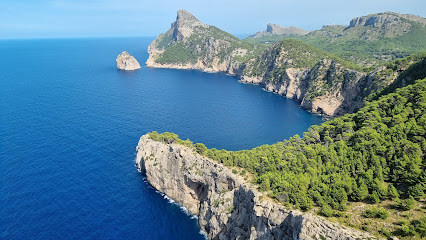
Banys Àrabs
Explore Banys Àrabs in Palma, Mallorca - a historical landmark showcasing the island's Moorish heritage amidst tranquil gardens.

Porta del Moll
Discover the historical charm of Porta del Moll in Alcúdia, a gateway to the rich cultural heritage and stunning views of Mallorca.
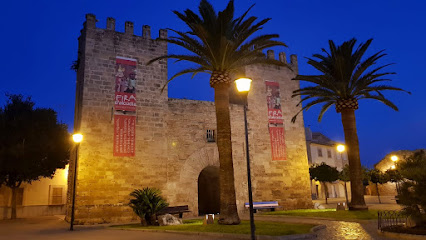
Poble Espanyol de Mallorca
Explore Poble Espanyol de Mallorca, an open-air museum showcasing stunning replicas of Spanish architecture and vibrant cultural experiences.

Son Marroig
Discover the artistic heritage and stunning gardens of Son Marroig, a must-visit museum in Deià offering breathtaking views and cultural insights.

Es Fortí
Explore the captivating history and stunning views of Es Fortí, Mallorca's cherished historical landmark by the sea.

Porta de Mallorca
Experience the timeless beauty of Porta de Mallorca in Alcúdia, a historical landmark that tells the tales of Mallorca's rich cultural heritage.

Torre Major
Discover Torre Major, a historic landmark in Alcúdia, offering breathtaking views and a glimpse into the rich heritage of the Balearic Islands.

Unmissable attractions to see
Catedral-Basílica de Santa María de Mallorca
Explore the breathtaking Gothic architecture of the Catedral-Basílica de Santa María de Mallorca, a stunning symbol of Palma's rich history and culture.

Palma Aquarium
Discover Palma Aquarium, a premier attraction in Mallorca showcasing marine life, conservation efforts, and interactive experiences for the whole family.

Castell de Bellver
Experience the architectural wonder of Castell de Bellver in Palma, a historical castle offering stunning views and a glimpse into Mallorca's rich past.
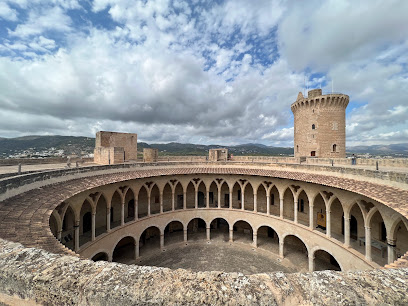
Parc natural de Mondragó
Discover the breathtaking landscapes and tranquil beauty of Parc Natural de Mondragó, a must-visit destination in Mallorca's Balearic Islands.

Train Sóller Station (Palma de Mallorca)
Discover the charm of Train Sòller Station: a historic gateway to Mallorca's breathtaking landscapes and rich cultural heritage.
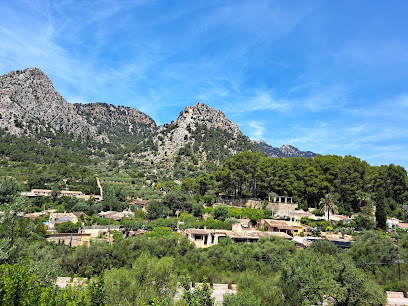
Santuari de Lluc
Explore the serene Santuari de Lluc, a spiritual sanctuary and hotel in the heart of the Balearic Islands, surrounded by stunning landscapes and rich history.

Royal Palace of La Almudaina
Discover the Royal Palace of La Almudaina in Palma, Mallorca—a stunning historical landmark with breathtaking views and rich cultural heritage.
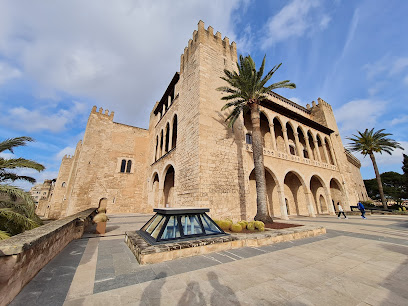
Cala Agulla
Explore the stunning Cala Agulla beach – a serene paradise in the Balearic Islands, perfect for relaxation, adventure, and unforgettable memories.

Jardins d'Alfàbia
Explore the serene beauty and historical richness of Jardins d'Alfàbia in the Balearic Islands, a perfect blend of nature and culture.

Banys Àrabs
Explore Banys Àrabs in Palma, a serene historical landmark that unveils Mallorca's Moorish heritage amidst stunning gardens and ancient architecture.

Porta del Moll
Explore the iconic Porta del Moll, a historical landmark in Alcúdia, Balearic Islands, where history meets stunning architecture and vibrant local culture.
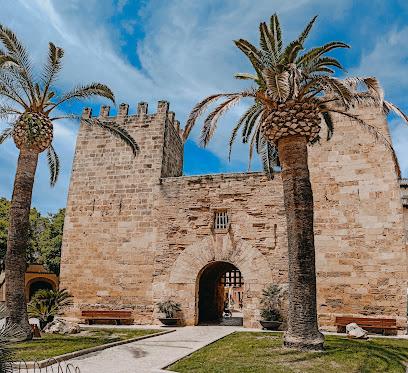
Hidropark Alcúdia
Experience a day of thrilling water adventures at Hidropark Alcúdia, the ultimate family-friendly water park in Port d'Alcúdia, Balearic Islands.

Capdepera Lighthouse
Discover breathtaking views and rich maritime history at Capdepera Lighthouse, a must-visit scenic attraction in Mallorca.

Porta del Moll
Discover Porta del Moll, a historical gateway in Alcudia that offers a glimpse into the town's rich past and beautiful architecture in the Balearic Islands.

Poble Espanyol de Mallorca
Explore the essence of Spanish culture and architecture at Poble Espanyol de Mallorca, an open-air museum in Palma that captivates every visitor.

Essential places to dine
OMBU Passeig del Born
Discover exquisite tapas and cocktails at OMBU Passeig del Born, Palma's premier destination for Mediterranean cuisine.

Bar Andaluz
Discover Bar Andaluz: A vibrant tapas bar in Platja de Palma serving authentic Andalusian cuisine amidst a lively atmosphere.

Ginger Beach
Experience vibrant Mediterranean flavors at Ginger Beach in Platja de Palma – where every meal becomes a seaside celebration.

Restaurante Pura Vida Mallorca
Discover authentic Mediterranean flavors at Restaurante Pura Vida Mallorca in Cala Figuera—where fresh ingredients meet stunning coastal views.

La Bodeguilla
Experience authentic Mediterranean and Spanish cuisine at La Bodeguilla in Palma – where every dish tells a story.

QuitaPenas Valldemossa
Experience authentic Spanish tapas at QuitaPenas Valldemossa - where every dish tells a story.

Wine & Food Restaurant
Discover the essence of Mediterranean cuisine at Wine & Food Restaurant in Palma – where tradition meets innovation.

Adrian Quetglas Restaurant
Discover Mediterranean culinary artistry at Adrian Quetglas Restaurant in Palma—where every dish is a masterpiece crafted with passion.

Ca's Patró March
Experience exquisite Mediterranean cuisine amidst breathtaking views in Deià at Ca's Patró March.

Mar de Nudos Mediterranean & Japanese cuisine
Experience a unique blend of Mediterranean and Japanese cuisines at Mar de Nudos in Palma - where every dish tells a story.

Sa Punta Restaurant
Discover the exquisite flavors of Mediterranean cuisine at Sa Punta Restaurant in the breathtaking Balearic Islands.

Lume&Co Restaurante en Mallorca
Experience exquisite Mediterranean cuisine and premium meat dishes at Lume&Co Restaurante in Mallorca's beautiful Palma.

Andana
Experience exquisite Mediterranean flavors at Andana in Palma - where culinary creativity meets vibrant atmosphere.

Restaurante Il Paradiso
Experience authentic Italian cuisine at Il Paradiso in Palma—where Mediterranean flavors meet elegant dining.

Marc Fosh Restaurant
Experience exquisite Mediterranean fine dining at Marc Fosh Restaurant in Palma – where culinary creativity meets elegance.

Markets, malls and hidden boutiques
FAN Mallorca Shopping
Explore FAN Mallorca Shopping for a diverse retail experience, tasty dining, and family-friendly entertainment in the heart of Palma.

Rialto Living
Discover Rialto Living, a captivating blend of art, design, and lifestyle in Palma, offering unique home goods and a charming café experience.

ALE-HOP
Explore ALE-HOP in Palma for unique gifts and charming souvenirs that capture the essence of the Balearic Islands.

Maricastaña
Explore the vibrant fashion scene at Maricastaña, Palma's top destination for stylish clothing and exquisite jewelry.

UNICO Vintage store
Explore Unico Vintage Store in Palma for a unique shopping experience filled with carefully curated vintage clothing and accessories.

Flamingos Vintage Mallorca
Explore the charming world of vintage fashion at Flamingos Vintage Mallorca, where unique pieces meet sustainable shopping in the heart of Palma.

Típika
Discover the artistry of Mallorca at Típika, Palma's premier gift shop offering unique local crafts and exquisite souvenirs.

Natura
Explore Natura in Palma for unique home goods and gifts, showcasing the enchanting spirit of the Balearic Islands.

We Lovers Store
Explore the enchanting We Lovers Store in Palma, a treasure trove of handcrafted gifts and unique novelties that embody Balearic craftsmanship and creativity.

Estiu Concept Store
Explore Estiu Concept Store in Palma for unique handicrafts and fashion accessories that embody the spirit of the Balearic Islands.

La Insular
Explore La Insular in Palma: Your destination for unique Balearic gifts and souvenirs, showcasing local craftsmanship and culture.

Forum Shop
Explore Forum Shop in Palma for a unique shopping experience with a variety of fashion and accessories in the heart of the Balearic Islands.
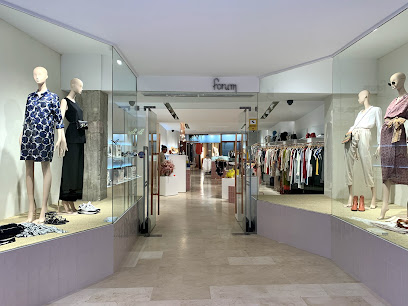
Pinko Boutique Puerto, Palma De Mallorca
Explore the elegance and contemporary style of Pinko Boutique Puerto, where fashion meets sophistication in the heart of Palma De Mallorca.
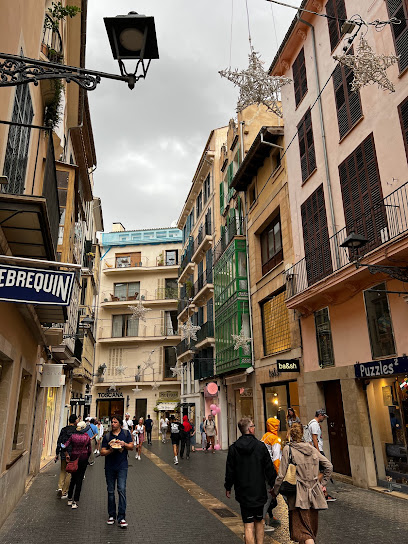
Etcetera Mallorca
Explore the charming Etcetera Mallorca, where unique gifts and local treasures await in the heart of Alcúdia, Balearic Islands.
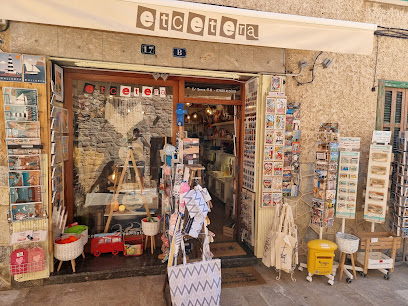
Singular Vintage House
Explore the eclectic charm of Singular Vintage House in Palma—your destination for unique vintage clothing and accessories.

Essential bars & hidden hideouts
Shamrock Palma
Discover Shamrock Palma: A vibrant gastropub blending Irish warmth with Palma's lively culture, perfect for food, drinks, and live entertainment.

Bar Abaco
Discover the enchanting ambiance and exquisite cocktails at Bar Abaco, a premier lounge bar in Palma, Mallorca, perfect for a magical evening out.
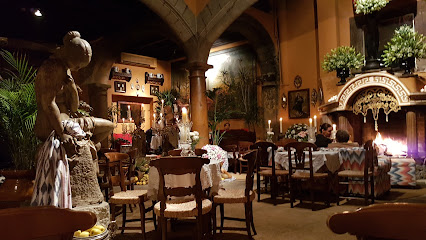
Three Lions
Experience the vibrant nightlife at Three Lions in Palma, where great food, live music, and a friendly atmosphere await.

Ginbo Cocktail Bar
Experience Palma's nightlife at Ginbo Cocktail Bar, where innovative cocktails and a vibrant atmosphere create unforgettable memories.

Lennox The Pub - Palma
Discover Lennox The Pub, Palma's vibrant sports bar offering delicious food, refreshing drinks, and a lively atmosphere for sports lovers and foodies alike.

Atomic Garden
Discover the vibrant nightlife of Palma at Atomic Garden, a popular pub known for its eclectic drinks and lively atmosphere.

Zen Lounge Bar and Grill
Discover the flavors of the Mediterranean at Zen Lounge Bar and Grill, Palma Nova's premier destination for grilled delights and vibrant dining experiences.

Brassclub
Experience Palma's vibrant nightlife at Brassclub, a cocktail bar renowned for its creative drinks and lively ambiance in the heart of the city.

Bar Nicolás
Discover the vibrant atmosphere of Bar Nicolás, Palma's premier cocktail bar, offering expertly crafted drinks and a lively outdoor seating area.

Chapeau Palma
Discover Chapeau Palma, a chic cocktail bar offering unique drinks and a lively atmosphere in the heart of Palma's nightlife.

Chucca Playa de Palma
Experience the vibrant nightlife of Playa de Palma at Chucca, where expertly crafted cocktails meet a lively atmosphere for an unforgettable evening.

the soho bar
Experience the vibrant nightlife of Palma at The Soho Bar, renowned for its exquisite cocktails and lively ambiance, perfect for socializing and unwinding.

Cafe Atlántico
Dive into the vibrant nightlife at Cafe Atlántico, Palma's premier cocktail bar serving exquisite drinks in a lively atmosphere.

Gibson Bar
Discover the vibrant atmosphere and creative cocktails at Gibson Bar, a prime spot in Palma's nightlife scene.

TWINS Chill out
Experience the vibrant and inclusive atmosphere of TWINS Chill Out, Palma's premier hookah bar and social gathering spot.

Local Phrases about Mallorca
-
- HelloHola
[oh-lah] - GoodbyeAdiós
[ah-dee-ohs] - YesSí
[see] - NoNo
[no] - Please/You're welcomePor favor/De nada
[por fah-bor/deh nah-dah] - Thank youGracias
[grah-thyas] - Excuse me/SorryPerdón/Lo siento
[pair-dohn/loh syen-toh] - How are you?¿Cómo estás?
[koh-moh ehs-tahs] - Fine. And you?Bien. ¿Y tú?
[byen. ee too] - Do you speak English?¿Hablas inglés?
[ah-blahs een-glays] - I don't understandNo entiendo
[noh ehn-tyen-doh]
- HelloHola
-
- I'd like to see the menu, pleaseMe gustaría ver la carta, por favor
[meh goos-tah-ree-ah bair lah kahr-tah, por fah-bor] - I don't eat meatNo como carne
[noh koh-moh kahr-neh] - Cheers!¡Salud!
[sah-lood] - I would like to pay, pleaseMe gustaría pagar, por favor
[meh goos-tah-ree-ah pah-gar, por fah-bor]
- I'd like to see the menu, pleaseMe gustaría ver la carta, por favor
-
- Help!¡Ayuda!
[ah-yoo-dah] - Go away!¡Vete!
[veh-teh] - Call the Police!¡Llama a la Policía!
[yah-mah ah lah poh-lee-thee-ah] - Call a doctor!¡Llama a un médico!
[yah-mah ah oon meh-dee-koh] - I'm lostEstoy perdido/a
[ehs-toy pair-dee-doh/pair-dee-dah] - I'm illEstoy enfermo/a
[ehs-toy ehn-fehr-moh/ehn-fehr-mah]
- Help!¡Ayuda!
-
- I'd like to buy...Me gustaría comprar...
[meh goos-tah-ree-ah kohm-prar] - I'm just lookingSolo estoy mirando
[soh-loh ehs-toy meer-ahn-doh] - How much is it?¿Cuánto cuesta?
[kwan-toh kwehs-tah] - That's too expensiveEs demasiado caro
[ehs deh-mah-syah-doh kah-roh] - Can you lower the price?¿Puedes bajar el precio?
[pweh-dehs bah-har ehl pree-syoh]
- I'd like to buy...Me gustaría comprar...
-
- What time is it?¿Qué hora es?
[keh oh-rah ehs] - It's one o'clockEs la una en punto
[ehs lah oo-nah ehn poon-toh] - Half past (10)Y media
[ee meh-dee-ah] - MorningMañana
[mah-nyah-nah] - AfternoonTarde
[tahr-deh] - EveningNoche
[noh-cheh] - YesterdayAyer
[ah-yehr] - TodayHoy
[oy] - TomorrowMañana
[mah-nyah-nah] - 1Uno
[oo-noh] - 2Dos
[dohs] - 3Tres
[trehs] - 4Cuatro
[kwa-troh] - 5Cinco
[theen-koh] - 6Seis
[says] - 7Siete
[syeh-teh] - 8Ocho
[oh-choh] - 9Nueve
[nweh-veh] - 10Diez
[dyehth]
- What time is it?¿Qué hora es?
-
- Where's a/the...?¿Dónde está el/la...?
[dohn-deh ehs-tah ehl/lah] - What's the address?¿Cuál es la dirección?
[kwal ehs lah dee-rehk-syon] - Can you show me (on the map)?¿Puedes enseñarme (en el mapa)?
[pweh-dehs ehn-seh-nyar-meh (ehn ehl mah-pah)] - When's the next (bus)?¿Cuándo es el próximo (autobús)?
[kwan-doh ehs ehl proh-ksee-moh (ow-toh-boos)] - A ticket (to ....)Un billete (a ....)
[oon bee-yeh-teh (ah)]
- Where's a/the...?¿Dónde está el/la...?
History of Mallorca
-
The history of Mallorca begins in prehistoric times, with the earliest known inhabitants dating back to the Talaiotic culture around 1000 BC. This era is marked by the distinctive talaiots, megalithic structures that served as communal burial sites and defensive towers. These structures are scattered across the island, offering a glimpse into the island's ancient past.
-
In 123 BC, Mallorca was conquered by the Romans under the leadership of Quintus Caecilius Metellus. The island became part of the Roman Empire and was known for its production of olives, wine, and a prized fish sauce called 'garum.' The Romans established the cities of Pollentia (modern-day Alcúdia) and Palma, laying the groundwork for the island's infrastructure and urban development.
-
After the fall of the Roman Empire, Mallorca experienced a period of instability. In the 5th century AD, the island was invaded by the Vandals, a Germanic tribe. Later, in the 6th century, it was reconquered by the Byzantine Empire. This period saw the construction of early Christian basilicas and the spread of Christianity across the island.
-
In 902 AD, Mallorca was conquered by the Moors, who integrated the island into the Emirate of Córdoba. Under Moorish rule, the island flourished economically and culturally, with advancements in agriculture, trade, and architecture. The Moors introduced sophisticated irrigation systems and new crops, transforming the landscape. Many of the island's place names and architectural features, such as the Almudaina Palace, date back to this period.
-
In 1229, King James I of Aragon launched a campaign to reconquer Mallorca from the Moors. After a hard-fought battle, the island was successfully captured and integrated into the Kingdom of Aragon. This period marked the beginning of a new era of Christian rule, with the construction of Gothic cathedrals, such as La Seu in Palma, and the establishment of feudal estates.
-
The 14th and 15th centuries were a time of prosperity for Mallorca, known as the Golden Age. The island became a major trading hub in the Mediterranean, attracting merchants from across Europe and the Middle East. This era saw the rise of a wealthy merchant class and the construction of grand mansions and palaces in Palma. The Lluc Monastery, a significant religious site, also dates back to this period.
-
During the 16th and 17th centuries, Mallorca faced numerous pirate raids from North African corsairs. To protect the island, a series of coastal watchtowers and fortifications were constructed. The island's capital, Palma, was fortified with walls and bastions, remnants of which can still be seen today. This period of conflict and defense shaped much of the island's coastal architecture.
-
In the early 18th century, the War of Spanish Succession led to the island coming under Bourbon rule. This period saw significant modernization efforts, including the construction of new infrastructure and the introduction of new agricultural techniques. The 19th century brought further changes, with the advent of the Industrial Revolution and increased connectivity with mainland Spain.
-
The 20th century marked the beginning of Mallorca's transformation into a major tourist destination. The island's natural beauty, pleasant climate, and rich cultural heritage attracted visitors from around the world. The tourism boom led to rapid development, with the construction of hotels, resorts, and recreational facilities. Despite the challenges of mass tourism, Mallorca has managed to preserve much of its historical and cultural charm.
Mallorca Essentials
-
Mallorca, the largest of Spain's Balearic Islands, is accessible via several means. The primary gateway is Palma de Mallorca Airport (PMI), located about 8 km east of Palma. Numerous international and domestic flights connect to PMI, making it a convenient entry point. Alternatively, ferries operate from mainland Spain, particularly from Barcelona, Valencia, and Denia, arriving at the ports in Palma, Alcudia, and Andratx.
-
Mallorca offers various transportation options. Public buses operated by TIB and EMT connect major towns and tourist destinations. Renting a car provides the flexibility to explore the island at your own pace. Additionally, taxis and ride-sharing services are available. For short distances within Palma, consider using bicycles or electric scooters, which are readily available for rent.
-
The official currency of Spain is the Euro (EUR). Credit and debit cards are widely accepted in hotels, restaurants, and shops. ATMs are abundant, especially in tourist areas, but it is advisable to carry some cash for smaller establishments or rural areas. Ensure your card has international access and inform your bank of your travel plans to avoid any disruptions.
-
Mallorca is generally safe for tourists. However, petty crime such as pickpocketing can occur, particularly in crowded areas and public transportation. Areas like Magaluf and Palma can have higher incidents of such crimes, especially during peak tourist seasons. Always be vigilant, keep your belongings secure, and avoid poorly lit areas at night.
-
In an emergency, dial 112 for assistance, which connects you to police, fire, and medical services. Palma has several hospitals, including Son Espases University Hospital, which offers comprehensive medical services. Pharmacies are widespread and can provide over-the-counter medications. It is recommended to have travel insurance that covers health emergencies.
-
Fashion: Do dress appropriately when visiting churches and monasteries; shoulders and knees should be covered. Avoid overly revealing clothing in public areas. Religion: Do respect local customs and religious practices. Public Transport: Do be courteous and offer your seat to elderly passengers. Don’t eat or drink on public transport. Greetings: Do greet people with a handshake or a kiss on both cheeks. Eating & Drinking: Do try the local cuisine and be open to tasting new dishes. Don’t rush meals; dining is a social and leisurely activity.
-
To experience Mallorca like a local, visit the Mercat de l'Olivar in Palma for fresh produce and local delicacies. Spend a day exploring the lesser-known villages such as Sóller, Valldemossa, and Deià, where you can enjoy authentic Mallorcan culture away from the tourist crowds. Attend local festivals and events, such as the Sant Joan Festival in June, to immerse yourself in the island's traditions. Lastly, consider joining a guided hike or cycling tour to discover the island’s natural beauty.
Trending Landmarks in Mallorca
Nearby Cities to Mallorca
-
Things To Do in Barcelona
-
Things To Do in Tarragona
-
Things To Do in Girona
-
Things To Do in Valencia
-
Things To Do in Lleida
-
Things To Do in Algiers
-
Things To Do in Pas de la Casa
-
Things To Do in Escaldes-Engordany
-
Things To Do in Andorra la Vella
-
Things To Do in Encamp
-
Things To Do in Alicante
-
Things To Do in Soldeu
-
Things To Do in Canillo
-
Things To Do in La Massana
-
Things To Do in Tizi Ouzou













